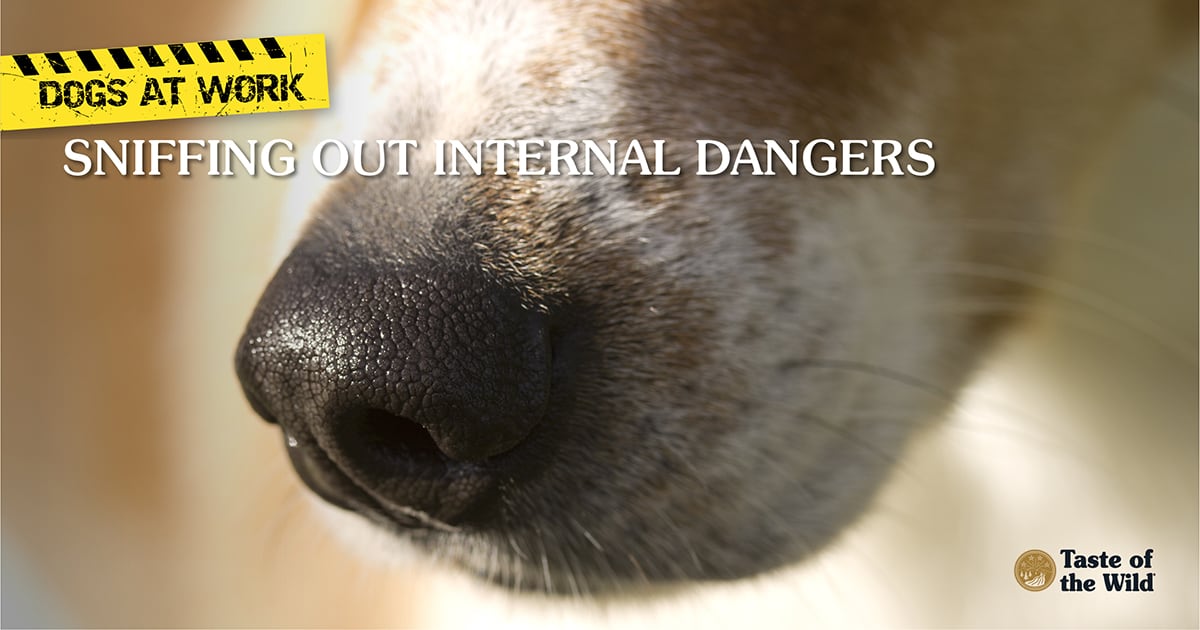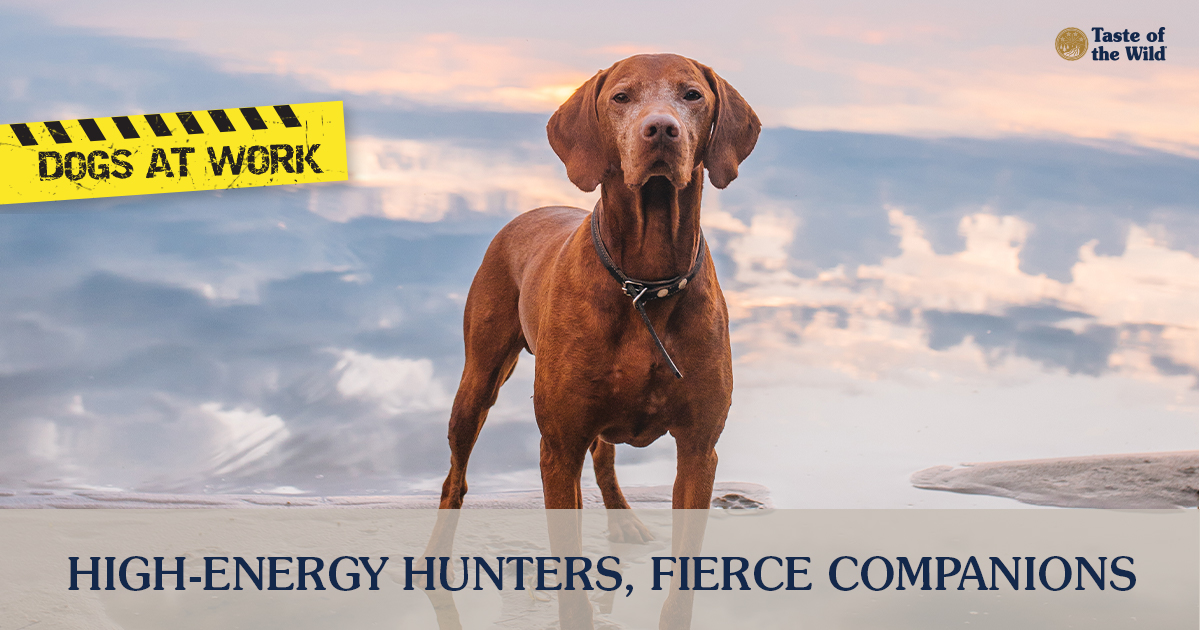Cancer-Sniffing Dogs Are the Best Medicine
Thursday, July 20, 2017 | Working Dogs

The dog was obsessed with a mole on his person’s leg. The mixed breed constantly sniffed at the blemish — even when the woman wore pants — and eventually tried to bite it off. Although the woman wasn’t particularly concerned about the mole, her dog’s persistence convinced her to seek her doctor’s opinion.
As it turned out, the mole was a malignant melanoma. This spurred two physicians to write a letter to Lancet, a respected medical journal, in 1989. This letter became the first published evidence of a cancer-sniffing dog.
Since that time, dogs have been used to detect cancer in human tissue, blood, urine and breath, enabling them to identify bladder, prostate, ovarian, colorectal, breast and lung cancers, in addition to skin cancer. Although they can’t differentiate one cancer from another, scientists believe the dogs may pick up the scent of volatile chemicals given off by the malignant cells.
Lest you become paranoid the next time your dog runs his snout over your skin, relax: dogs that can detect cancer generally only do so after intensive training.
A Sense of Smell That’s Nothing to Sniff At
When it comes to the sense of smell, humans can’t even sniff a dog’s sniffing-ability. According to dog cognition researcher Alexandra Horowitz, author of Inside of a Dog, the canine sense of smell is so sensitive, a dog could detect a teaspoon of sugar in the equivalent of two Olympic-sized pools.
Dogs have fifty times as many scent receptors as humans, or about 300,000 of them. And unlike people, dogs have a second scent organ located on the bottom of the nasal passage called the vomeronasal or Jacobson’s organ, to aid in detecting even more scents.
TRAINING MEDICAL DETECTION DOGS
Believe it or not, there are organizations such as the Penn Vet Working Dog Center in the United States and Medical Detection Dogs in the United Kingdom that train dogs to detect human cancer.
Trainers start by exposing the dog to blood or tissue samples from cancer patients. If the dog sniffs at it, they are rewarded with praise and a treat or toy. Through positive reinforcement, the dog is rewarded each time they differentiate the malignant sample from other scents.
Eventually, the dog is challenged with a scent wheel, a round carousel with 12 perforated, stainless steel boxes around the perimeter. One box typically contains a blood or tissue sample from a patient with cancer. Others may contain normal samples, samples from patients with benign tumors, coffee grounds, gloves and other items. When the dog sits by the box with the cancerous sample, it is rewarded.
At the Penn Vet Working Dog Center, where they are currently training dogs to detect ovarian cancer, the dogs correctly choose the right blood sample 90 percent of the time. For a deadly cancer that’s typically difficult to diagnose, this is no small feat.
EVENTUALLY REPLACED BY A COMPUTER
The goal of all this training isn’t to have dogs working at hospitals and clinics, pacing the waiting room in search of patients with cancer. Currently, the dogs are only trained to detect cancer in medical samples, not in people.
These training centers collaborate with other scientists who are working to isolate the exact chemicals the dogs identify. Since the accuracy of the dogs can vary depending on a number of factors including breed, level of training and handler bias, the hope is to eventually create an electronic sensor that can essentially replace the dogs.
But for now, the dogs are applying their noses to help scientists get one step closer to the earlier diagnosis of many human cancers. Amazing, isn’t it?
The information in this blog has been developed with our veterinarian and is designed to help educate pet parents. If you have questions or concerns about your pet’s health or nutrition, please talk with your veterinarian.




